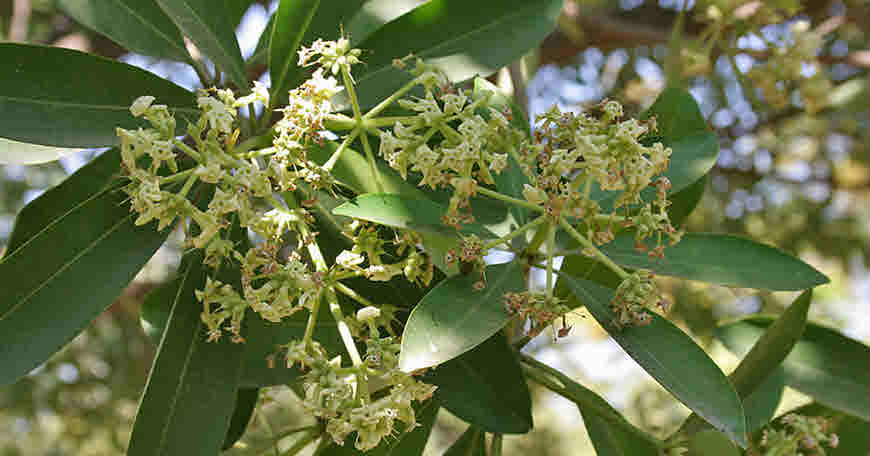Saptaparna, Ditta bark tree or Chhatim is a glabrous medicinal tree native to India. This tall, evergreen tree is distributed in tropical and deciduous forests of India. For the medicinal purpose its bark and roots are used. Its bark has febrifuge, antiperiodic, spasmolytic, anti-dysenteric, uterine stimulant and hypotensive properties. It has blood purifying properties and used to treat skin disorders. The bark is used in the form of decoction/kadha to cure malarial fever, diarrhea, indigestion, etc.Ditta bark tree or Devil’s tree is a common tree that is distributed throughout India, in the sub Himalayan region from the Yamuna eastward ascending to 3000 feet above sea level, West Bengal and South India. This tree is also found in Sri Lanka, Southern China, Malaysia, northern Australia and Solomon Islands.

Description of tree
Large evergreen tree reaching up to height of 17 to 20 m, have bitter milky latex. Bark is greyish brown, rough, lenticellate. 4-7 Leaves in a whorl, coriaceous, elliptic-oblong, pale beneath. Flowers small, greenish white, spice scented. Fruits follicles, 30 – 60 cm long. Seeds papillose with brownish hair at each end.
- Botanical name: Alstonia scholaris
- Kingdom: Plantae
- Order: Gentianale
- Family: Apocynaceae
- Genus: Alstonia
- Species: A. scholaris
- Synonym: Echites scholaris L. Echites pala Ham., Tabernaemontana alternifolia Burm.
| Vernacular Name Sanskrit: Saptaparna English: White Cheesewood, Birrba, Milkwood Pine, Milk Wood, Milky Pine, Black Board Tree, Devil’s Tree, Dita Bark Marathi: Saptaparni Hindi: Chatium, Chhatin, Satwin, Saitan-Ki-Jad Gujarati: Satuparni Assamese: Chhaiten Telugu: Edakulaponna |
Burmese: Lettok Filipino: Dita, Dalipoen Indonesian: Rite, Pulai, Pule Javanese: Pule Malay: Pulai, Pulai, Linlin Trade name: Pulai, Shaitan Wood, Chatiyan Wood, White Cheesewood Malayalam: Daivapala Bengali: Satiani, Chattin, Chatium Tamil: Elalaipalai, Palegaruda, Pala |
Useful Parts
Leaf, bark and milky juice.
As Per Ayurveda Properties and Action of Saptaparna
- Rasa: Tikta, Kashaya
- Guna: Sara, Snigdha
- Virya: Ushna
- Vipaka: Katu
- Karma: Anulomana, Dipana, Jwar-har, Kushaghna, Rakta-shodhaka, Tridosh-nashak
Medicinal uses
- Ulcers
Apply milky latex on ulcers. - Diarrhoea
Take powdered bark (3 teaspoon) of Devil’s tree and soak in one glass boiling water for one hour. Filter and drink 2-3 times a day. - Indigestion, Gastritis, Slimy/Mucus stools
Take powdered bark (1/2 teaspoon) of Devil’s tree and soak in boiling water for one hour. Filter and drink once a day. - Fever, rheumatism, scrotal hernia
Take root powder (1/4 teaspoon) in a cup of lukewarm water and drink. - Joint pain, Rheumatism, ulcers
Prepare paste of its bark and apply at affected areas.
Caution: The extract of A.scholaris showed Central Nervous System (CNS) depressant activity and sedative behavior in lab test on mice.
In higher concentration it creates a marked toxicity to the brain of mice. So it should never be taken in excess.